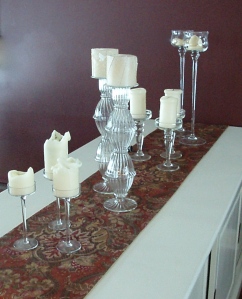In DESIGN, there are Seven Principles and Seven Elements.
Today, we’re talking about one of the seven principles: Rhythm.
Most of you have listened to music and felt the pulse and maybe, like me, even tapped your foot to the beat. Rhythm in design is similar to that. When you walk into a room, your eyes naturally look around and take in the different features of that space; feel it’s beat. In good room design, we bring in movement and rhythm through texture, pattern, color, and varying shapes and sizes. This is accomplished with repetition, progression, and transition.
Repetition occurs when you repeat a pattern, color, shape or texture. This ties a room (or home) together. Pops of one different color, like teal or orange, for example, create that visual “beat”. Be careful, however, not to overdo it with one element, or it would be like hearing the same song every day. You could also repeat a pattern to create the desired flow.
Progression is accomplished when you create movement with the use of a group of objects that vary in quality, like size or color. Two examples would be: a collection of candles that differ in size, or decorating with a monochromatic color scheme. It’s like a succession of chords in a song.
Transition creates flow in the space. Your eye glides from one object or area to another instead of “jumping” around. In design this is often achieved with curves….think curved doorways or furniture, and their ability to “draw you in”.
©KAY MCLANE DESIGN, LLC
